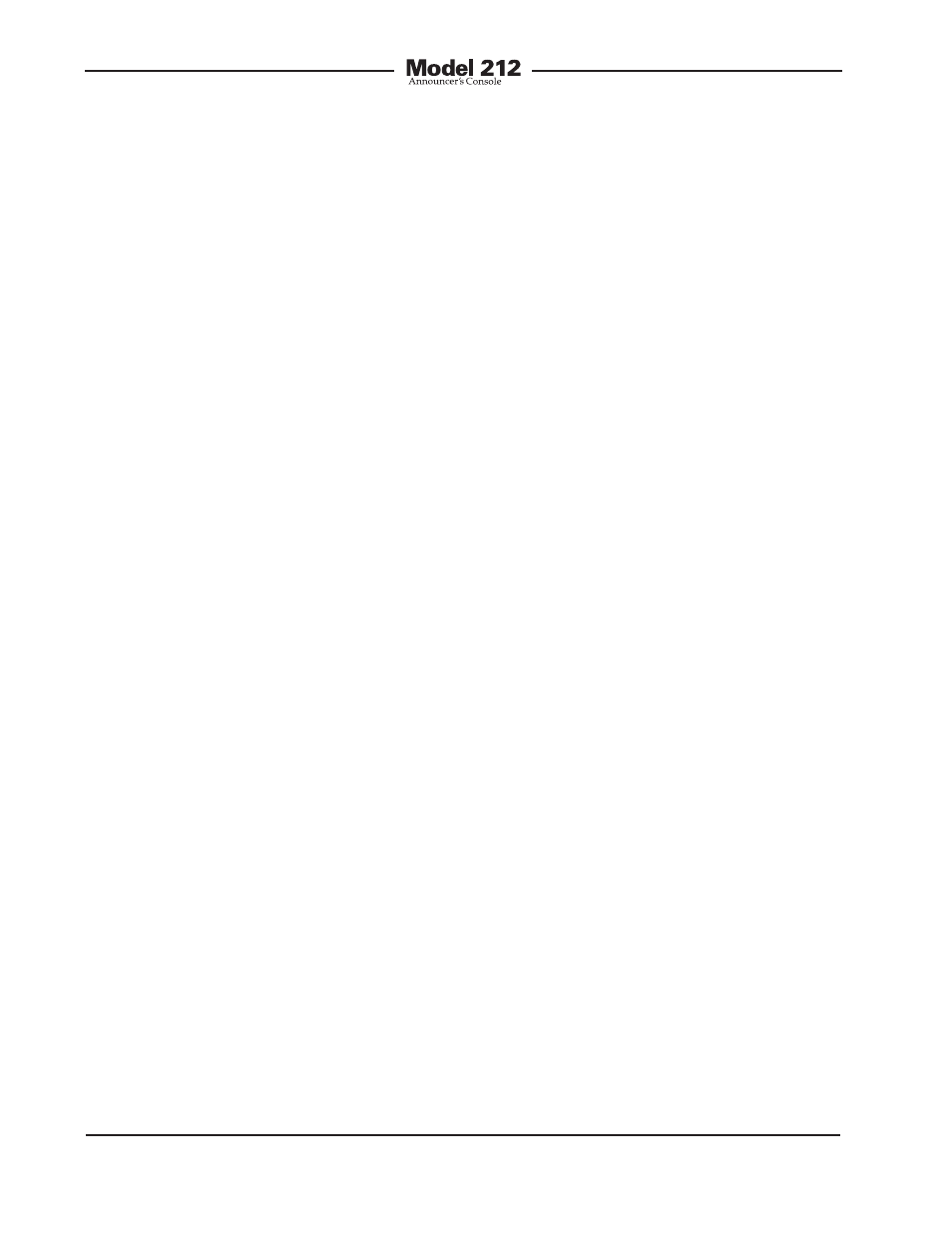Cue sources, Headphone output – Studio Technologies M212-00151 User Manual
Page 7

Issue 2, June 2006
Model 212 User Guide
Page 8
Studio Technologies, Inc.
operation is similar to that found in many
broadcast intercom system user stations.
The button associated with the talkback
function can be configured to operate
from either of two modes. One of the
modes supports a “push-to-talk” function.
This is typically used for on-air broadcast
applications. The other mode provides a
hybrid function, the operation of which is
discussed in the previous paragraph. The
hybrid mode is especially useful when the
Model 212 is used in a production-support
application.
Cue Sources
The Model 212 allows two audio channels
from one of three digital audio sources
to be routed to the stereo headphone out-
put. Configuration switches select which
digital input is active. The available sourc-
es are the AES3id input, the previously
discussed bidirectional digital interface,
and the optionally implemented AES3
input. The AES3id input is an unbalanced,
75 ohm interface that uses a BNC connec-
tor. Transformer-coupled, it is compatible
with standard unbalanced digital audio
signals. The bidirectional digital interface
is similar to AES3id but carries two audio
channels in each direction. It is intended
for use in special applications. The AES3
input is balanced, 110 ohms, and to use
requires the addition of a connector on
the unit’s back panel. No matter which of
the digital inputs is selected, the receiver
circuitry can accept bit depths of 16 to 24.
While the nominal sample rate is 48 kHz,
any signal in the range of 32 to 96 kHz is
acceptable. Note that the received clock
signal is used for two purposes; it allows
correct receiver synchronization as well as
serving as the transmitter clock source for
the digital outputs.
Digital-to-analog conversion circuitry cre-
ates two analog “cue” audio signals from
the selected digital interface. In on-air
broadcast applications these cue signals,
originating in production trailers, control
rooms, or remote locations, supply pro-
gram-with-interrupt audio on one chan-
nel and program-only audio on the other.
Each source can be individually assigned
to the left channel, right channel, or both
left and right. This allows a wide variety of
stereo and mono headphone mixes to be
created.
Some applications may benefit by being
able to connect standard line-level audio
signals to the Model 212. To meet this
need one or two optional line input cards
can be installed in the Model 212’s back
panel. Each card provides a female XLR-
type connector and transformer-isolated
+4 dBu nominal input circuit. Each source
can be individually assigned to the left
channel, right channel, or both left and
right.
Headphone Output
Two rotary controls are provided for
user adjustment of the headphone output
levels. For application flexibility the actual
function of the two “pots” is configurable.
For traditional on-air sports applications
they can be selected to the dual-channel
(“level/level”) mode which provides
independent control of the left- and
right-channel volume. For use with dual-
channel cue signals, or to support user
preference, the stereo (“level/balance”)
mode can be selected. In this mode one
control adjusts the overall level of both
the left and right channels, while the other
allows adjustment of the left/right level
balance. To help minimize the chance of
broadcast cues being missed, both level
